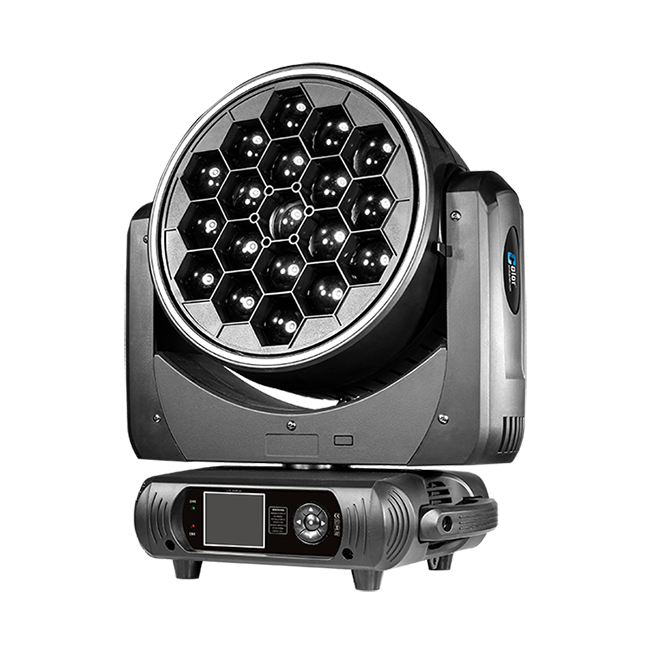Exploring the Versatility of Moving Head Lights
Moving head lights are a versatile and dynamic lighting fixture commonly used in concerts, theatrical productions, and events. These lights offer a range of features and capabilities that allow lighting designers to create stunning visual effects and enhance the overall atmosphere of a performance. From their ability to move and change colors to their versatility in creating patterns and effects, moving head lights are an essential tool for any lighting designer. This article explores the versatility of moving head lights and how they can be used to create impactful lighting designs.
Understanding Moving Head Lights
Moving head lights are a type of intelligent lighting fixture that can pan, tilt, and change colors and patterns. They consist of a moving head, which contains the light source and optics, mounted on a base that allows for precise movement and control. Moving head lights come in various sizes and configurations, from small, compact fixtures to larger, more powerful units. Color Imagination provides a wide range of moving head lights for sale, so whether you're planning a concert, theatre performance or corporate event, you'll be able to find the perfect lighting solution to suit your needs.
1. Pan and Tilt Movement
One of the primary features of moving head lights is their ability to pan (move horizontally) and tilt (move vertically). This movement allows lighting designers to direct light beams to specific areas of the stage or venue, creating dynamic and engaging lighting effects.
2. Color Mixing
Moving head lights can produce a wide range of colors by mixing different colored LEDs or filters. This feature allows designers to create colorful and vibrant lighting designs that can enhance the mood and atmosphere of a performance.
3. Gobo Projection
Moving head lights can project patterns, shapes, and images onto surfaces using interchangeable gobos. Gobos are placed in front of the light source and can create various effects, such as stars, clouds, or logos, adding visual interest to the lighting design.
4. Beam Control
Moving head lights can control the width and intensity of the light beam, allowing designers to create sharp, focused beams or soft, diffused light. This feature is useful for highlighting specific areas or creating a wash of light across the stage.
5. Effects
Moving head lights can produce a variety of effects, such as strobing, pulsing, and color fading. These effects can add excitement and energy to a performance, creating visual interest and enhancing the overall experience for the audience.
Applications of Moving Head Lights
2. Theatrical Productions
In theatrical productions, moving head lights are used to create mood and atmosphere, highlight key moments, and enhance the storytelling. They can be used to simulate natural lighting effects, such as sunlight or moonlight, and create dramatic scenes that transport the audience to different worlds.
3. Events and Festivals
Moving head lights are also popular in events and festivals, where they are used to create immersive lighting experiences that captivate attendees. They can be used to illuminate stages, buildings, and landscapes, creating a vibrant and visually appealing environment.
4. Corporate Events and Presentations
In corporate events and presentations, moving head lights are used to create a professional and polished look. They can be used to light up stages, highlight speakers, and create branding opportunities with custom gobos and colors.
Tips for Using Moving Head Lights
1. Plan Your Lighting Design
Before using moving head lights, it's essential to plan your lighting design carefully. Consider the mood and atmosphere you want to create, the key moments you want to highlight, and how the lighting will complement the overall production.
2. Experiment with Movement and Effects
Moving head lights offer a wide range of movement and effects options. Experiment with different combinations to create unique and engaging lighting designs that enhance the performance.
3. Coordinate with Other Lighting Fixtures
Moving head lights are often used in conjunction with other lighting fixtures, such as spotlights and floodlights. Coordinate the movement, color, and intensity of all lights to create a cohesive and visually appealing lighting design.
4. Consider the Venue
The size and layout of the venue will impact how you use moving head lights. Consider the height of the ceilings, the distance to the stage, and any obstructions that may affect the movement and visibility of the lights.
Conclusion
Moving head lights are a versatile and powerful lighting fixture that can enhance any performance or event. Their ability to pan, tilt, change colors, and create patterns makes them an essential tool for lighting designers looking to create impactful and engaging lighting designs. Whether used in concerts, theatrical productions, or corporate events, moving head lights offer endless possibilities for creating dynamic and visually stunning lighting effects that captivate audiences and enhance the overall experience.
